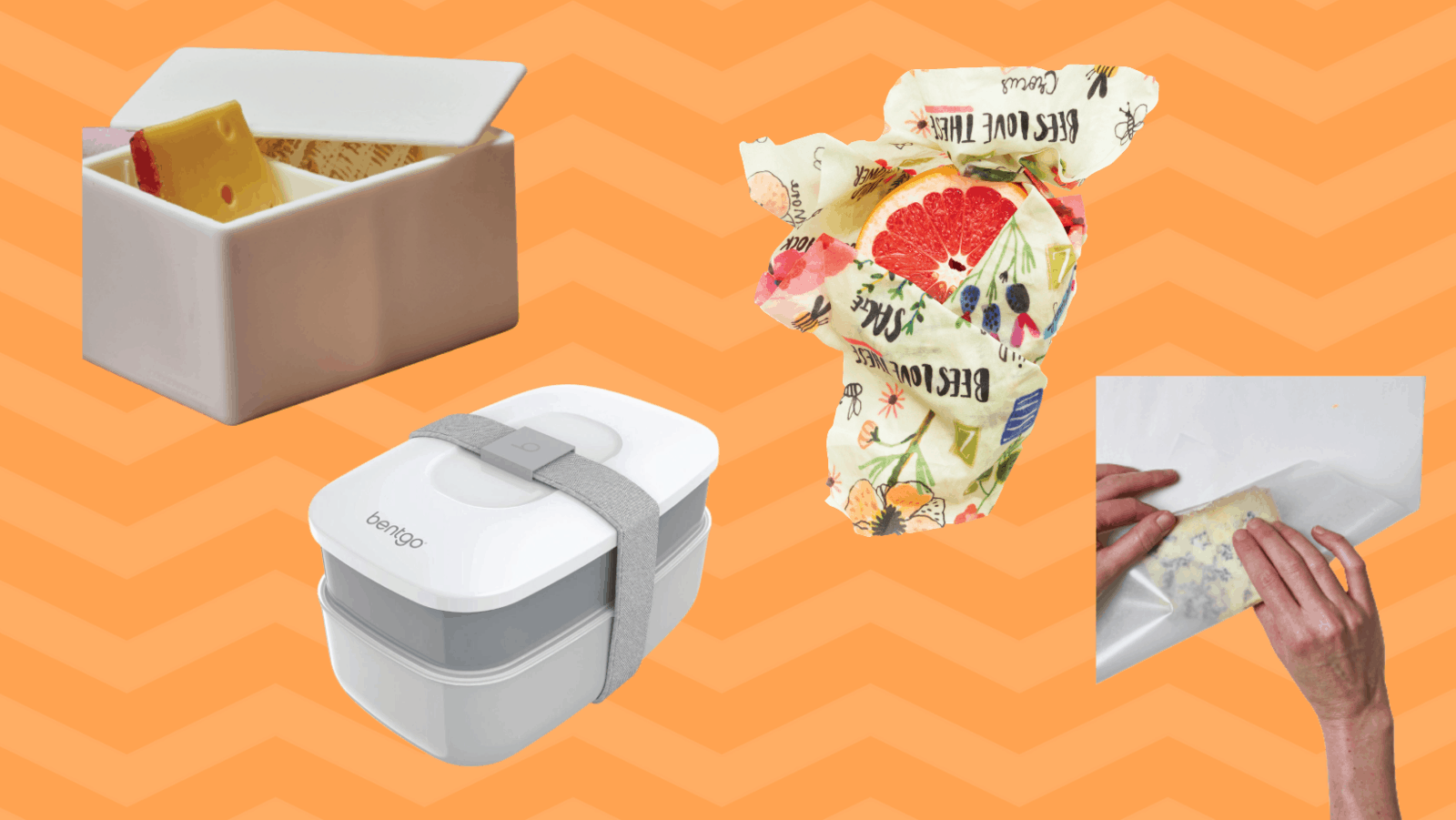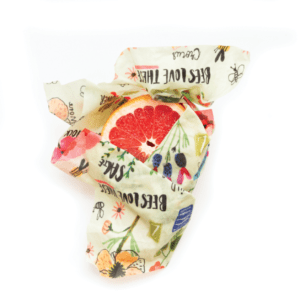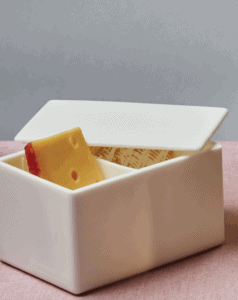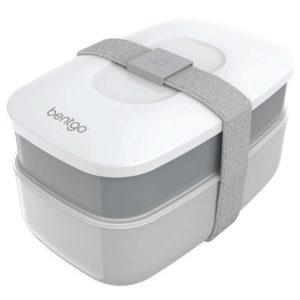
It’s said that cheese was first created by accident some 8,000 years ago, when an Arab trader went for a sip of milk from his sheep’s-stomach pouch and instead found a fermented substance more solid than liquid. While cheese was likely “discovered” much earlier than that—it’s probably been around for as long as humans have been milking animals—this mythical Arab trader was utilizing an era-appropriate cheese storage method whose popularity would continue for centuries.
Once cheese became an intentional foodstuff and evolved into its myriad variations, just as many methods of storage developed alongside it. Storage not only helped to extend the life of cheese and stave off harmful bacteria, but it provided protection from marauding rats and other vermin.
In the Fertile Crescent, besides animal stomachs, clay pots were popular for storing softer cheeses or those that needed to stay submerged in brine. Cloth preservation was popular in the British Isles, with the cloth often soaked in animal fat and wrapped around cheese wheels while they aged. Wax was the go-to cheese casing in Northern Europe during the Middle Ages, although not every household had a bubbling pot of wax at the ready every time they needed to stow a leftover wedge.
With the advent of plastic, specifically plastic wrap, the modern world discovered an effective and uncomplicated way to preserve cheese in the refrigerator. That is, until people started to complain that plastic made cheese taste like…well, plastic. As if the absence of rat nibbles wasn’t enough! It’s since been noted that it’s not the plastic seeping into the cheese, but rather the way it filters light and traps moisture close to the paste, essentially suffocating the poor cheese and “tanning” it with a weird, plastic-filtered glow. So if plastic isn’t the storage answer, what’s a turophile to do?
Cheese is a delicate thing: It can be sensitive to changes in temperature, moisture, light, nearby objects, and sometimes even noise. (Truly—Google “cheese listening to music” for one of the weirdest scientific studies ever conducted, no pun intended.) Storage is of the utmost importance when it comes to maintaining flavor, freshness, and longevity, but poor (or simply misguided) storage solutions have been the death of too many good cheeses. Even the most seasoned cheese stewards can be stumped by a fuzzy wedge of fromage they took great pains to wrap tightly.
Thankfully, we’ve come a long way from animal skin pouches and melted candles. (At least now we have cold storage!) Here are a few refrigerated cheese storage solutions that not only make for happier cheese, but happier cheese eaters (and cut down on waste, to boot).

1. FORMATICUM ZERO CHEESE STORAGE PAPER
Use for: medium-soft – hardest cheese
Any cheesemonger worth their salt will tell you that paper is the way to go for preserving most firm cheeses. Paper lets in just the right amount of air while protecting cheese from light, fridge odors, and roving mold spores. Plus, it doesn’t impart any of its own essence onto the cheese. While Formaticum’s biodegradable cheese paper isn’t reusable, per se, it’s a good deal friendlier to the planet than plastic cling wrap and sticky tape. Best for firmer cheeses.

2. ZWRAPS
Use for: medium-hard – hardest cheeses
These waxed cotton wraps are a callback to the cloth-and-animal-fat cheese bandages of Ye Olde Englande, because why mess with a good thing? Thankfully, ZWraps are not nearly as stinky or grungy as old cheddar pajamas—they’re actually quite cute, washable, and reusable! Cheerful printed cotton squares are coated in a blend of jojoba oil, beeswax, and tree resin, allowing cheese to breathe while protecting it from the elements. Perfect for preserving your Gruyère or your Grana.

3. CAPABUNGA CHEESE VAULT
Use for: soft – medium-hard cheeses
Caves provide the ideal conditions for most cheeses: They’re dark, cool, and maintain their humidity levels, which is why they’ve been used to age cheese since time immemorial. This matchbox-sized cheese vault performs quite a similar feat, without the bats or ghost miners, plus it can fit on a fridge door shelf. Silicone walls wick moisture away from cheese while giving it room to breathe, and a handy adjustable divider wall can separate two cheeses that might not play too nicely together. Use a cheese vault for more sensitive cheeses, like your double creams and smooth Alpine styles.

4. BENTGO BOX
Use for: softest – hard cheeses
Like a cheese vault, these leak-proof, segmented lunch boxes provide designated areas for every type of cheese wedge, from oozy triple creams to hunks of gouda. They come in all sorts of fun colors, sizes, and configurations, and can easily go from the fridge to the backpack to the picnic blanket while keeping cheese fresh and unsullied. Take portable luxury even further by stocking your box with nuts, charcuterie, and other fixings for an alfresco cheese plate.



